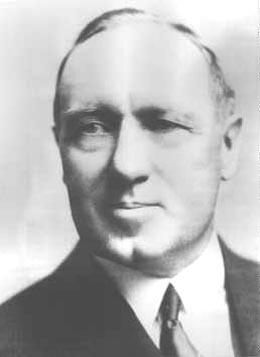For much of the first half of the twentieth century, the name Reginald Parsons was readily associated with civic leadership and philanthropy not only in his adopted home town of Seattle, but also in other Pacific Northwest communities. An individual of proven financial acumen, Parsons early on in his career recognized the benefits of sharing his good fortune by investing some of the proceeds of his success in the communities in which he had interests.
Early Life
Reginald Hascall Parsons was born on New York's Long Island on October 3, 1873. His family, descended from John Bradford, the first Governor of Massachusetts, had substantial holdings in Colorado, and it was there that Parsons began his long and successful career as a financier by selling mining stocks and real estate. In 1901 he married Maude Bemis, daughter of the owner of the Bemis Bag Company, and three years later the two relocated to Seattle to operate the Bemis Bag factory there. They had five children, one of whom died at an early age.
Over the course of the next several decades, Parsons established himself as one of the region's leading financiers, successfully investing in a variety of fields through the vehicle of his primary corporation, the Parsons Investment Company. Although Parsons maintained a diversified portfolio of investments, his holdings were heavily weighted toward agriculture, including dairy farms in Washington, a cattle ranch in northern California, fruit-packing houses and distribution businesses, and a pear orchard in southern Oregon. This latter investment would play a major role in Parson's life.
Oregon's Hillcrest Orchard
Parsons purchased the Hillcrest Orchard, near Medford, Oregon, in 1908, and became so enamored of the location that he soon established a pattern of dual residency between his Seattle home on Queen Anne Hill and Hillcrest; he would maintain that pattern for the remainder of his life.
Hillcrest is one of the few remaining examples of the small, centrally planned orchard complexes that sprang up during the Rogue Valley's orchard boom in the early years of the twentieth century. Twelve of the buildings at Hillcrest, including the main residence, office, packing house, barns garages, spray shed and wash rack are listed on the National Register of Historic Places. All were designed by noted Medford architect Frank. C. Clark.
A Boy Scout Leader
Parsons' civic and philanthropic accomplishments rivaled his commercial ones. In 1916 Parsons became the first president of the Seattle Boy Scout Council, a position he held for five years. During this period he donated land on Hood Canal for a scout camp that was named in his honor.
He later went on to serve on the National Board of the Boy Scouts of America. Parsons also served a president of the Seattle Chamber of Commerce (1916-1921) and was active with the National Chamber of Commerce.
Many Seattle organizations benefited from Parsons' support, including the Social Welfare League (which after several intervening name changes has been known since 2009 as Wellspring Family Services), the Pacific Coast Defense league (1917-1921), the Seattle Community Chest, Lakeside School, and the Seattle Civic Unity Committee. In 1923 Parsons was appointed to the American Olympic Committee.
Parsons was not the sole member of his family to contribute to the community. His wife Maude was also an active philanthropist, and is perhaps best remembered for her contributions to the founding of Seattle's Children's Orthopedic Hospital.
Reginald Parsons died on June 9, 1955. His funeral was held at St. Mark's Cathedral in Seattle.

